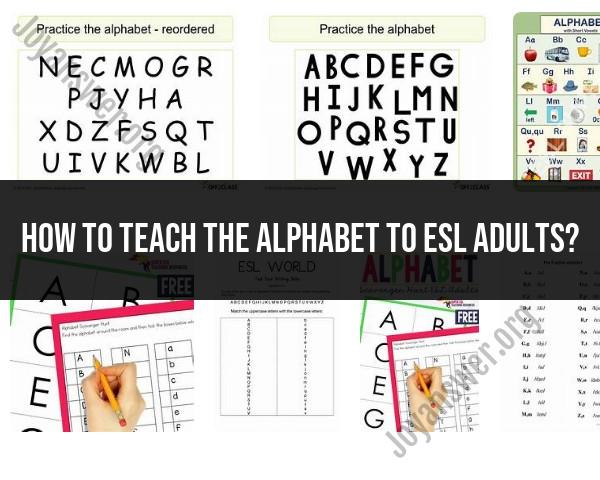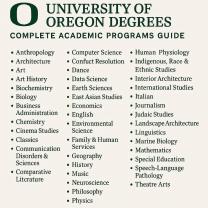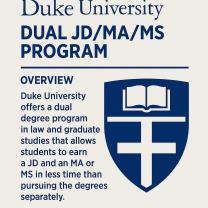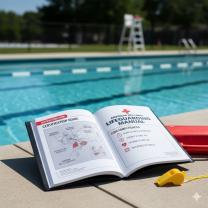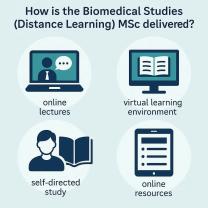How to teach the alphabet to ESL adults?
Teaching the alphabet to ESL (English as a Second Language) adults can be a fundamental yet challenging task. The approach you take should consider the diverse needs and backgrounds of your adult learners. Here are some strategies to effectively teach the alphabet to ESL adults:
Assess Prior Knowledge: Before you begin, assess your students' prior knowledge of the English alphabet. Some students may already know some letters, while others may be starting from scratch.
Use Visual Aids:
- Display the English alphabet prominently in the classroom, whether it's on a poster, a whiteboard, or digital media.
- Provide individual copies of alphabet charts or worksheets for students to reference and practice with.
Phonetic Sounds:
- Introduce the phonetic sounds of the English alphabet alongside the letter names. This helps adults understand how the letters are used in pronunciation.
- Use words that begin with each letter to illustrate their sounds.
Grouping Letters:
- Group letters by similar shapes or sounds to make learning more manageable. For example, "a," "b," and "c" can be introduced together.
- Teach vowels and consonants separately to help students recognize their distinct roles in words.
Multisensory Learning:
- Engage multiple senses. Encourage students to write the letters while saying their names and sounds. This multisensory approach can enhance retention.
- Use tactile materials like sandpaper letters or magnetic letters for a hands-on experience.
Practice Writing:
- Provide opportunities for writing practice. Students can copy the alphabet, trace over letters, or write their own words using the letters they've learned.
Interactive Activities:
- Incorporate interactive activities like alphabet games, crossword puzzles, or word searches.
- Encourage students to spell their names, common words, or simple sentences.
Read Aloud:
- Read alphabet books or stories that feature words beginning with each letter. Encourage students to read along and identify the letters.
- Ask students to bring in simple books or texts in English to practice reading.
Flashcards:
- Create alphabet flashcards with the letter, a picture, and a word that starts with that letter. Use these for practice and recognition.
Songs and Rhymes:
- Utilize alphabet songs or rhymes to make learning more engaging and memorable.
- Some adults may find traditional children's songs enjoyable and effective as well.
Progressive Learning:
- Introduce a few letters at a time, gradually building up to the entire alphabet. This approach prevents overwhelming learners.
- Review previously learned letters regularly to reinforce retention.
Cultural Context:
- Discuss any variations in the English alphabet and pronunciation that may be relevant to the learners' native languages.
Encourage Self-Study:
- Suggest resources and websites that students can use for self-study and practice.
- Provide homework assignments for extra practice.
Real-Life Application:
- Show how the alphabet is used in daily life, such as in street signs, food packaging, or writing a shopping list.
Patience and Encouragement:
- Recognize that learning the alphabet can be challenging for adults, and they may have different motivations and goals. Be patient and offer positive reinforcement.
Remember that the key to success in teaching the alphabet to ESL adults is creating a supportive and engaging learning environment. Be flexible in your approach, adapt to the needs of your students, and celebrate their progress along the way.
1. Strategies for teaching the alphabet to ESL (English as Second Language) adults
Here are some strategies for teaching the alphabet to ESL adults:
- Start with the basics: Make sure that learners have a basic understanding of English phonology, including the sounds that each letter makes. This can be done by teaching learners about the different vowel and consonant sounds, as well as the different ways that letters can be blended together to form words.
- Use a variety of teaching methods: There is no one-size-fits-all approach to teaching the alphabet to ESL adults. Some learners may prefer to learn through visual aids, while others may prefer to learn through hands-on activities. Use a variety of teaching methods to keep learners engaged and to appeal to different learning styles.
- Make it relevant to learners' lives: Connect the alphabet to learners' lives by teaching them vocabulary words that they are familiar with. For example, you could teach learners the letter "A" by teaching them the words "apple" and "arm."
- Provide opportunities for practice: Learners need opportunities to practice using the alphabet in order to master it. Provide learners with plenty of opportunities to practice writing and saying the letters of the alphabet.
Tailoring alphabet lessons to the specific needs and backgrounds of ESL learners
When tailoring alphabet lessons to the specific needs and backgrounds of ESL learners, it is important to consider the following factors:
- Prior knowledge: What do learners already know about the English alphabet? Do they have any prior experience with English?
- Native language: What is learners' native language? Are there any similarities between their native language and English?
- Learning style: How do learners learn best? Do they prefer to learn through visual aids, hands-on activities, or auditory instruction?
- Interests: What are learners interested in? Can you incorporate their interests into your alphabet lessons?
Integrating multimedia, technology, and visual aids in ESL alphabet instruction
Multimedia, technology, and visual aids can be integrated into ESL alphabet instruction in a variety of ways. For example, you could:
- Use educational videos and games to teach learners about the alphabet.
- Show learners pictures and flashcards of objects that start with different letters.
- Have learners use alphabet apps and websites to practice writing and saying the letters of the alphabet.
- Create interactive alphabet charts and worksheets.
Engaging and interactive activities for ESL adults to learn the alphabet
Here are some engaging and interactive activities for ESL adults to learn the alphabet:
- Alphabet bingo: Create alphabet bingo cards and have learners play bingo to practice identifying the letters of the alphabet.
- Alphabet scavenger hunt: Hide alphabet letters around the classroom and have learners find them.
- Alphabet relay race: Divide learners into teams and have them race to see which team can put the letters of the alphabet in order the fastest.
- Alphabet songs and chants: Teach learners songs and chants about the alphabet.
- Alphabet crafts: Have learners make alphabet crafts, such as alphabet puppets or alphabet bookmarks.
Resources and materials for effective ESL alphabet teaching
Here are some resources and materials for effective ESL alphabet teaching:
- Alphabet flashcards: Alphabet flashcards are a classic tool for teaching the alphabet.
- Alphabet posters: Alphabet posters can be displayed in the classroom to help learners learn the alphabet.
- Alphabet workbooks: Alphabet workbooks provide learners with opportunities to practice writing and saying the letters of the alphabet.
- Alphabet apps and websites: There are a number of educational apps and websites that can be used to teach learners about the alphabet.
- Alphabet songs and chants: There are a number of alphabet songs and chants that can be used to teach learners about the alphabet in a fun and engaging way.
By following these tips, you can create effective and engaging alphabet lessons for ESL adults.
